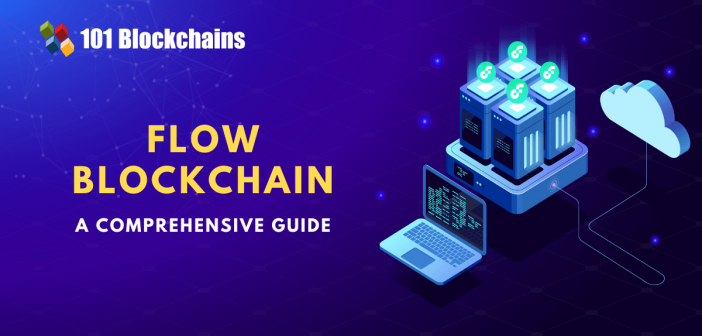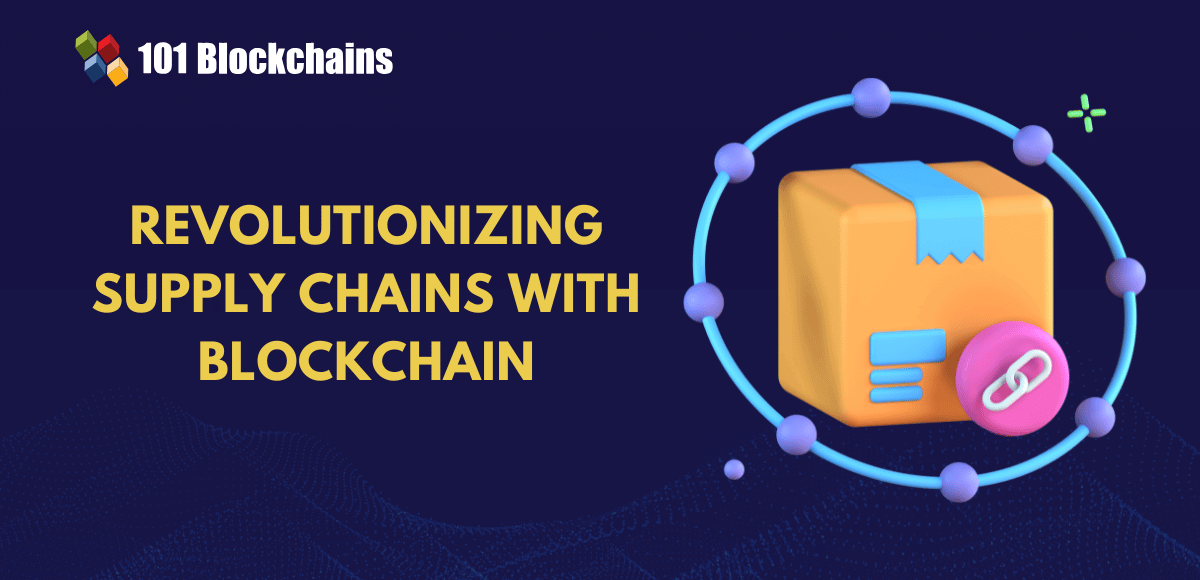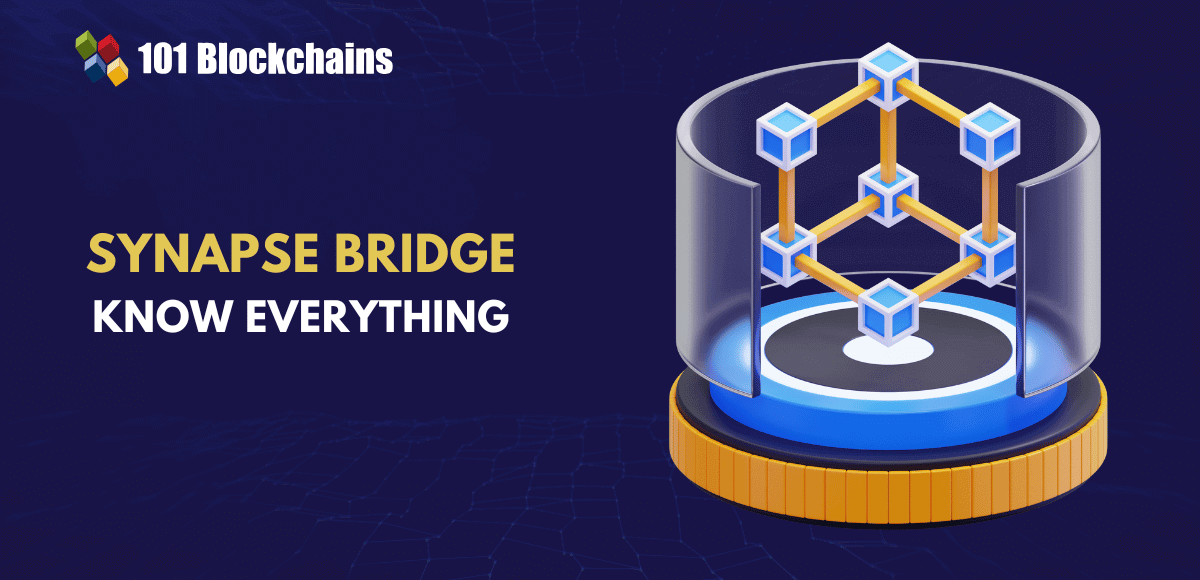Learn how blockchain truly works, master key definitions, and uncover what makes smart contracts so "smart." Dive into the fundamentals, gain valuable insights, and start your blockchain journey today!

- Blockchain
Gwyneth Iredale
- on October 06, 2021
Know Everything about Flow Blockchain
Are you familiar with the term flow blockchain or have recently come across it? This detailed guide on flow blockchain will help you understand the basic and advanced concepts, let’s dive in!
If you think that NFTs had been the headline-makers in 2021, then you might want to look back to 2017. CryptoKitties, one of the early NFT projects, made their presence felt in late 2017 by escalating the congestion levels on the Ethereum network beyond imagination. It was at this time that Dapper Labs perceived the lack of capability for addressing continuously growing demand in existing blockchain networks.
The addition of NFTs to the blockchain ecosystem implies the need for a purpose-built blockchain that can support NFTs. You can find your answers for such a blockchain in a Flow blockchain guide. Now, it is inevitable to wonder about Flow blockchain, its definition, and how it is useful for NFTs. The following discussion helps you learn about the fundamentals of Flow blockchain comprehensively.
Build your identity as a certified blockchain expert with 101 Blockchains’ Blockchain Certifications designed to provide enhanced career prospects.
History of Flow Blockchain
The first thing that you should know about the Flow blockchain is its history. What are the factors which went behind the origins of Flow blockchain? The origins of Flow start with the origins of Dapper Labs, which focused on introducing NFT and decentralized gaming solutions. Interestingly, Dapper Labs developed CryptoKitties and set off a revolution in the NFT industry.
However, the success of CryptoKitties resulted in congestion of the Ethereum network, thereby leading to higher transaction fees. Therefore, Dapper Labs decided to address the congestion issue by developing a customized blockchain tailored according to the features they wanted. This is where Flow blockchain was born.
What is Flow Blockchain?
The next obvious factor you look for in a Flow blockchain guide is the definition. Flow is basically a decentralized, fast, and developer-centric blockchain tailored for encouraging the growth of a completely new assortment of apps, games, and digital assets. Flow blockchain utilizes a distinct, multi-role architecture that focuses on the inherent benefit of scaling without sharding. Therefore, it can enable considerable advantages by improving throughput and speed while maintaining ACID compliance and a developer-friendly environment. Flow is an ideal instrument for developers to create profitable crypto and crypto-based businesses.
The applications on Flow could also help consumers take control of their individual data. At the same time, Flow also helps in creating completely new variants of digital assets, which you can trade on open marketplaces which are accessible from any location in the world. Another important aspect in the answers to ‘what is Flow blockchain’ is directly evident in its capabilities for enabling the development of open economies under the ownership of users, which add further value.
You can assemble smart contracts on Flow blockchain just like you would join Lego blocks together. Flow blockchain helps in creating and powering apps, which cater to the needs of billions of people as well as enterprises with mission-specific requirements.
Critical Traits of Flow Blockchain
Flow blockchain aims to address many prominent issues in existing blockchain networks. Therefore, you can find some noticeable highlights in the fundamentals of Flow blockchain, which set it apart from other blockchain networks. Here are the four crucial traits of Flow blockchain.
- Multi-role architecture
- Resource-oriented programming
- Consumer onboarding
- Developer ergonomics
The multi-role architecture is one of the important highlights in Flow blockchain basics. It helps in easier scaling without sharding or compromising with decentralization of consensus.
Resource-oriented programming is clearly evident in the facility for writing smart contracts on flow in the Cadence programming language. Cadence offers a simpler, safer, and easier programming language aimed at crypto apps and assets.
Flow blockchain has been tailored for the general customer, and functionalities such as payment onramps offer efficient, low-friction, and secure transition from fiat towards crypto.
Another important trait you could discover in a Flow blockchain guide refers to developer ergonomics. Flow blockchain has been tailored for everything developers need, such as in-built logging support, upgradeable smart contracts, and many more. Therefore, developers have a lot of opportunities to create new applications with Flow blockchain.
In order to understand the fundamentals of Flow blockchain clearly, it is important to know about its features in detail. So, let us expand this discussion further by reflecting on the value of the features you find in Flow blockchain.
Not sure how to build your career in enterprise blockchains? Enroll Now in How to Build Your Career in Enterprise Blockchains Course
Value Benefits of Flow Blockchain
Flow blockchain network has been tailored to address the congestion problem of existing blockchain networks. The features of blockchain are unique and play distinct roles in its functioning, thereby ensuring prolific value benefits. Let us find out how Flow blockchain is different by diving deeper into its structure and features in this Flow blockchain guide.
Multi-Node Architecture
The problem with traditional blockchain networks is the massive burden on each node. Every node has to store the complete state of the ledger alongside carrying out all tasks related to the processing of all transactions in the chain. Flow aims to solve this problem with the implementation of pipelining for blockchain networks to divide tasks of validator nodes. Therefore, Flow blockchain basics focus on the use of four different nodes such as,
- Collection Node
- Consensus Node
- Execution Node
- Verification Node
It is also interesting to note that this multi-node architecture in Flow blockchain clearly shows the separation of labor. Now, the separation of labor among nodes has been distributed throughout the various validation stages in each transaction. You must observe that the tasks are not distributed horizontally, like in sharding. Basically, the fundamentals of Flow blockchain imply that each validator node participates in validating every transaction, albeit at only one of the stages of validation. As a result, each node could specialize in its task, thereby ensuring improved efficiency.
Flow blockchain could offer considerable improvements in scalability with better throughput and lower cost through a shared execution environment. Smart contracts and user accounts could always interact with one another with ACID (Atomic, Consistent, Isolated, and Durable) compliance. As a result, Flow can ensure a better user experience alongside enabling developers to build on the works of each other.
Aspiring to become an Ethereum developer? Enroll now in our Ethereum Development Fundamentals Course and get started!
Working of Flow Blockchain
The working of Flow blockchain is also one of the notable additions among Flow blockchain basics for beginners. The working of Flow blockchain could help you understand its value advantages more clearly. Interestingly, the explanation of the working of Flow blockchain draws a lot from its architecture or the thought behind it.
As a matter of fact, the foundation for the multi-node architecture of Flow blockchain comes from an interesting insight. The architecture of Flow blockchain focuses on the feasibility of separating non-deterministic and deterministic processes followed by assigning them to different types of nodes according to relevant technical capabilities.
The broader classification of tasks in blockchain results in the following two categories.
- Deterministic or objective tasks include examples such as the computation of the result of ordered transactions.
- Non-deterministic or subjective tasks generally involve identifying the transactions and their ordering on the blockchain.
In most cases, the non-deterministic tasks would need a coordinated consensus process such as Proof of Work or Proof of Stake. On the contrary, deterministic tasks feature a single and objectively accurate outcome. The fundamentals of Flow blockchain emerged from the perception of the biggest bottleneck in blockchain performance. The Flow blockchain developer team found the deterministic task of transaction execution after including them in a block as the prime issue. So, the subjective process of the formation of the block requiring consensus is not the problem.
Aspiring to make a lucrative career as a blockchain developer but not sure how? Check the detailed guide Now on How To Become Blockchain Developer?
Multi-role Functionality
The most crucial highlight in a Flow blockchain guide refers to the important functions of all nodes in its architecture. Flow blockchain helps in pipelining the work of blockchain miners or validators across different roles. Each miner or validator must have some stakes in the network, thereby separating concerns for a significant reduction in redundant efforts. What are the roles of the individual nodes?
- Consensus nodes help in decisions on the presence and order of transactions on the blockchain.
- Verification nodes take care of maintaining and supervising the execution nodes.
- Execution nodes, as the name implies, are responsible for the computation work related to every transaction.
- Collection nodes are involved in improving the data availability and network connectivity for decentralized apps.
Interestingly, the design of Flow ensures that a single node could penalize and trigger recovery from invalid data brought by malicious Execution or Collection nodes. Flow blockchain basics suggest that the consensus and verification nodes take care of security by leveraging crypto-economic incentives to foster network-wide accountability.
The consensus nodes use a proof of stake algorithm. Consensus and verification nodes could also ensure network optimization for desired levels of decentralization and security. Furthermore, Consensus and Verification nodes also allow increased levels of participation in the Flow blockchain network.
Execution and collection nodes are responsible for carrying out the major share of deterministic work, thereby limiting their vulnerabilities. Other node types verify the work of execution and collection nodes while holding them accountable. So, it is safe to ensure proper optimization of execution and collection nodes for better scalability and security. The operations of such nodes would need dedicated server hardware in professionally managed data centers.
Want to learn about the components of the blockchain ecosystem in detail? Check out this guide on blockchain ecosystem components now!
How is Flow Blockchain Helpful for Developers?
The discussion on the value of Flow blockchain would obviously bring your attention to its benefits for developers. There are many aspects in the fundamentals of Flow blockchain which are ideally tailored for developers.
-
Resource-oriented Programming
First of all, developers have Cadence, a flexible, resource-oriented smart contract programming language with the Flow blockchain. Resource-oriented programming emphasizes encouraging a new approach for the creation of digital assets. It can enable developers to create unique and durable digital assets with ownership tracking through the language itself.
Cadence offers a comfortable and easy-to-read syntax along with a strong, static type system for reducing runtime errors. Therefore, you have a smart contract programming language that you can learn easily, audit easily, and achieve more productivity.
The value benefits for developers in a Flow blockchain guide should also focus on the open-source tooling. The Flow blockchain team has introduced many open source tools for developers to start using Flow blockchain. Some of the notable mentions include Flow Go SDK, Visual Studio Code Extension, Flow JavaScript SDK, and Flow Playground GUI.
-
Upgradeable Smart Contracts
The importance of learning about ‘what is Flow blockchain’ becomes clearer with the use of upgradeable smart contracts. The foremost advantage of smart contracts is that they assure users can trust the smart contract code. Flow enables deployment of smart contracts on the mainnet in a ‘beta state,’ which allows incremental updates in the code by original authors.
Users can easily identify the unfinished nature of the code and wait for code finalization prior to trusting it. After authors establish confidence about the safety of their code, they could irreversibly release their control on the contract. As a result, it can become ideally immutable.
In addition, Flow blockchain also ensures proper balancing of the needs of users in upgradeable smart contracts. It helps users in identifying the type of code they are working with. Users could know whether an application or smart contract is actually trustless while enabling flexibility for developers to modify code for a short period of time after shipping.
Curious to understand the complete smart contract development lifecycle? Enroll in Smart Contracts Development Course Now!
Consumer-friendly Onboarding
The highlight of consumer-friendly onboarding in Flow blockchain basics is clearly visible. Other than mainstream-ready payment onramps, Flow blockchain enables developing applications which people would love to use. Here are some of the elements in Flow blockchain which help in ensuring the value benefit of consumer-friendly onboarding.
-
Human Readable Security
It is practically impossible for an app or wallet to offer a human-readable message that outlines the permissions offered during the authorization of a transaction. With the Flow transaction format, you can find reliable assurance regarding the changes which a transaction could or could not introduce. As a result, the wallets could ensure that users make informed decisions. Flow blockchain transaction format enables easier static analysis, thereby creating possibilities for transaction approval processes with better transparency.
-
Smart User Accounts
Another important aspect in the fundamentals of Flow blockchain, which establishes its efficiency, refers to smart user accounts. Usability enhancements to the Ethereum account model have become integral aspects of the native account model in Flow. Therefore, users could find the following advantages with smart user accounts on Flow blockchain.
- In-built, optional, modular smart contract functionality for each Flow wallet.
- Smart user accounts support automated processes alongside improved authorization controls, thereby ensuring a favorable user experience. For instance, decentralized apps could easily ensure that consumers do not lose their assets or access to their accounts. How? You have secure account recovery flows with smart user accounts on Flow blockchain.
- The Flow blockchain basics also bring attention to the added security advantages with smart user accounts. The facility of optional multiple signature support alongside support for cycling out old keys on a regular basis helps in enhancing security.
Learn non-stop with 101 Blockchains free blockchain resources and take your blockchain expertise to the next level.
Bottom Line
Flow blockchain is an open, decentralized blockchain aimed at offering one platform for accommodating emerging use cases of blockchain technology. As the world witnessed a rapid growth in the adoption of NFTs, blockchain network usage would definitely present some issues. However, it is also important to look at alternatives such as the Flow blockchain.
The fundamentals of Flow blockchain explained in this discussion reflect on its definition and its critical features. In addition, you also learned about the different value benefits of Flow blockchain by diving deeper into its architecture. The multi-node architecture sets the Flow blockchain apart from existing blockchain networks. Keep learning to know how flow blockchain can be a valuable suggestion for NFT adoption.
*Disclaimer: The article should not be taken as, and is not intended to provide any investment advice. Claims made in this article do not constitute investment advice and should not be taken as such. 101 Blockchains shall not be responsible for any loss sustained by any person who relies on this article. Do your own research!






